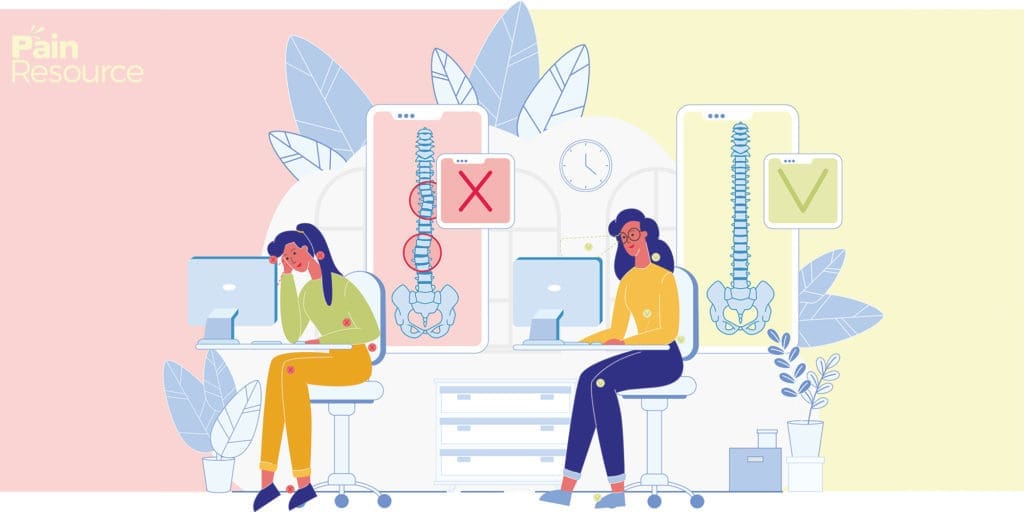We recently introduced our Pain Resource audience to Esther Gokhale, creator of the Gokhale Method, which teaches methods to improve your posture that can result in less pain and easier movement of the body. In the first post from our interview with Ms. Gokhale, we explained how her method came about and how it works to help people with pain.
In this excerpt from our interview, she offers tips on how to use her approach in your daily life. Which for most of us means relearning a healthier way of moving that we instinctively knew as babies and very young children.
Is it hard for people to relearn how to move in the way we once knew?
Esther Gokhale: This way of moving is something relaxed and natural and because it’s natural, even if it feels strange, it’s strangely familiar. We have a six-lesson course that we teach in cities all over the U.S. and abroad, and we see people completely transform their bodies. Very often results come in from day one. They’re learning to sit with traction in their body using external objects. It’s rare for people not to feel better and more optimistic about their future. We teach using intelligence, visual, and kinesthetic cues. Having these different prongs helps students learn faster and retain better.
Our audience is obviously people experiencing all kinds of pain. Can you talk about the connection between posture and movement and pain?
 EG: It’s a paradigm shift and it’s revolutionary. It’s a method that really needs to reach people in pain. That pain is there to tell them how to do things differently; that’s where we come into it. Why do people come [to our website and workshops]? It varies a lot. Some people come because they have a lot of pain, and some come to improve posture and want to avoid pain. It’s true that the most common [group] we have is women ages 30 to 60. … But we’re getting more people in the computer industry and also the elderly.
EG: It’s a paradigm shift and it’s revolutionary. It’s a method that really needs to reach people in pain. That pain is there to tell them how to do things differently; that’s where we come into it. Why do people come [to our website and workshops]? It varies a lot. Some people come because they have a lot of pain, and some come to improve posture and want to avoid pain. It’s true that the most common [group] we have is women ages 30 to 60. … But we’re getting more people in the computer industry and also the elderly.
You list a lot of types of pain that your method can help. Where have you seen the most dramatic results in healing or improving?
EG: We find a lot of magic with back pain. Foot problems–it’s an area where the [method] has worked very well. And we’re very effective for … hip, knee, and neck problems. And then also general fibromyalgia pain. When we improve circulation and the baseline processes of the body there is quite remarkable improvement. We see a lot of people who are not supposed to get better. There’s no age limit; it’s never too late to improve one’s structure and reap the benefits of that. Older people are expecting to be in decline, and suddenly they have a tailwind and their whole outlook on life changes. It’s wonderful to witness.
Are there types of chronic pain that the Gokhale Method probably won’t do much to ease?
EG: There are some kinds of pain, like intestinal [pain], but even there, improving the body’s architecture improves the digestive system. But acute injury, accidents, might need help from bodyworkers or medication or going to see the doctor and, on a rare occasion, surgery.
What’s an easy-to-follow piece of advice for correcting posture while sitting, standing, and walking?
- Sitting: Use the back rest [of a chair or in a car] as a traction device. We have a stretch cushion that hangs from the headrest in the car and can be attached to any chair and [you] can also use a towel. The person needs to lengthen their back (not sticking out their chest) and hitch themselves to that back rest and then their back is getting a sustained gentle stretch. Turn [sitting] into something good for you rather than something bad for you. (Gokhale encourages pain patients to sign up for one of her free workshops; you can find a schedule of upcoming classes here.)
- Standing: Start by rolling open your shoulders one at a time. That allows the weight of your arms to line up better with your spine, rather than pull the upper body into a rounded curve. (Gokhale encourages people to download a free PDF showing how to do this here.).
- Walking: You want to activate the glutes [buttock muscles] with every step you take, so that every step becomes a rep for the glutes without your having to go to the gym for it. This will increase balance and improve the pelvic architecture, which increases muscle mass.
What else do we need to do to improve posture and thereby reduce the sky-high rates of pain?
EG: We’ve come to the belief that employers and companies, as well as employees, would do well to take shared responsibility for the pain that people experience in the workplace. It’s a natural place where people can learn [how to improve posture] in terms that make it that more effective. It’s where the consequences of pain are very costly, and so the corporate arena really is thirsty for this teaching and training.
How’s your posture?
What topics related to poor posture and pain would you like to see us explore?
Email us at info@painresource.com with your ideas.
Are you on Facebook?


